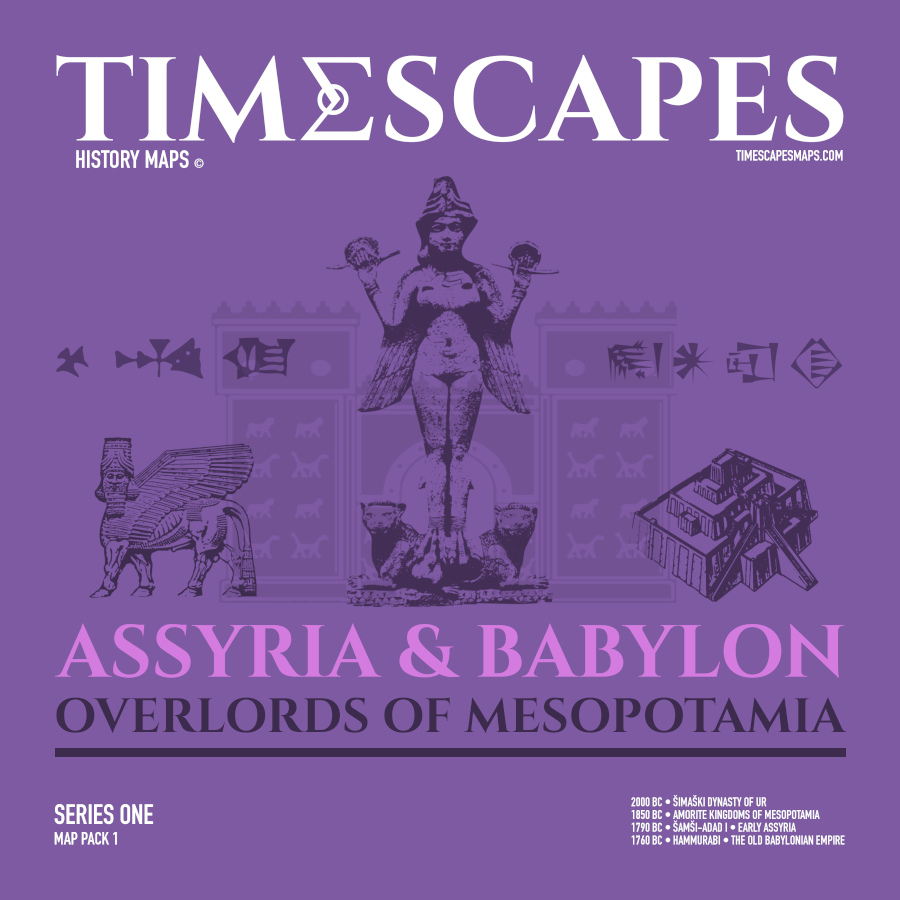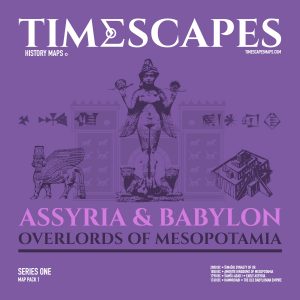
TIMESCAPES MAP PACK 3 – ASSYRIA & BABYLON Overlords Of Mesopotamia
The most significant event of the beginning of the second millennium BC was the collapse of the Neo-Sumerian Third Dynasty of Ur. From this point onwards, the Sumerians gradually disappear from history as a political power. Although their most ancient of Mesopotamian cultures would continue to inspire and receive homage from later kings, the Sumerians themselves were slowly assimilated into the cultures of their future occupants. Over the next 300 years, further proliferation of new kingdoms occurred throughout the ancient Near East, the most notable of which were two Amorite empires: the Old Assyrian or Old Mesopotamian Empire of Šamši-Adad and the Old Babylonian Empire of Hammurabi.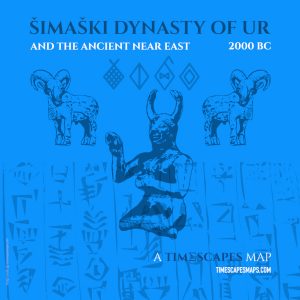
TIMESCAPES MAP PACK 3 – ASSYRIA & BABYLON
2000 BC: ŠIMAŠKI DYNASTY OF UR
Between c. 2200 BC – 1900 BC, the powerful Elamite dynasty of Šimaški came to rule not only Elam but also a large part of Mesopotamia, bringing an end to Sumerian hegemony forever by toppling the Third Dynasty of Ur and warring with the kingdoms of Isin and Larsa. The Šimaški and their successors the Sukkalmah imposed a regime on Mesopotamia that lasted several hundred years and was only terminated by one of the greatest kings of the ancient world: Hammurabi of Babylon.
TIMESCAPES MAP PACK 3 – ASSYRIA & BABYLON
1850 BC: AMORITE KINGDOMS OF MESOPOTAMIA
Since around 2100 BC, the Amorites, a Semitic people who may have originated in Arabia, had been gradually migrating eastwards from Canaan and Syria to Mesopotamia.
Initially many served as soldiers in the armies of Akkad and the Third Dynasty of Ur; later, as Amorite populations increased after the turbulence following the collapse of the Neo-Sumerian dynasties, many rose to positions of power in the political world of Mesopotamia.
Eventually the Amurru assumed complete control of the ancient kingdoms of Sumer and Babylon, the latter of which, under the legendary Amorite king Hammurabi, they elevated from a minor town to one of the greatest cities of the ancient world.
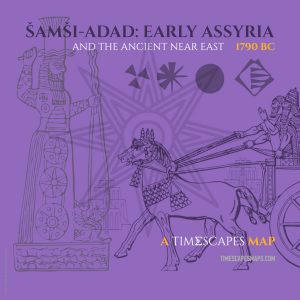
TIMESCAPES MAP PACK 3 – ASSYRIA & BABYLON
1790 BC: ŠAMŠI-ADAD – EARLY ASSYRIA
Šamši-Adad (Amorite: Šamši-Addu) was an Amorite king who usurped the throne of Assyria from Erišum II of Aššur.
Earlier, as a prince of Ekallatum, he had been forced into temporary exile by the aggression of the neighbouring kingdom of Ešnunna, taking refuge in Babylon.
In 1808 BC, Šamši-Adad returned, taking back Ekallatum and expanding his power over Māri and Assyria, founding what become known as the Old Assyrian Empire from his new capital at Šubat-Enlil.
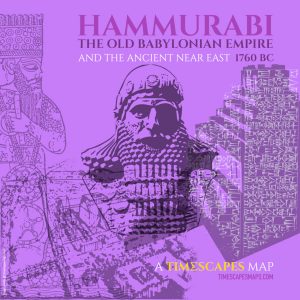
TIMESCAPES MAP PACK 3 – ASSYRIA & BABYLON
1760 BC: HAMMURABI – THE OLD BABYLONIAN EMPIRE
By the middle of the 18th century BC, the Babylonian king Hammurabi, self proclaimed ‘King Of The Amoritesʼ, had driven the Elamites out of Mesopotamia, taken control of the once-great kingdoms of Sumer, assimilated his former allies of Ešnunna, Yamhad and Māri, and crushed the resistance of the Assyrian king Išme-Dagan.
His 42-year rule was long by ancient standards and had started peacefully with a series of public works and building projects. At the end of his reign, his law code, The Code Of Hammurabi, although not the first of its kind, set a new standard for legislation systems of the ancient world.

